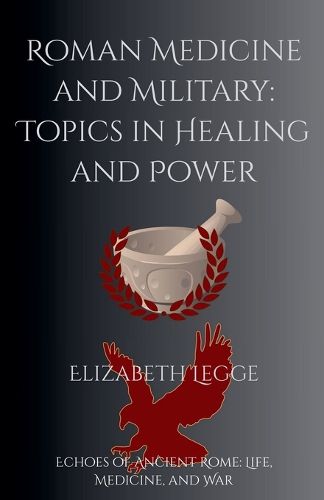Readings Newsletter
Become a Readings Member to make your shopping experience even easier.
Sign in or sign up for free!
You’re not far away from qualifying for FREE standard shipping within Australia
You’ve qualified for FREE standard shipping within Australia
The cart is loading…






This title is printed to order. This book may have been self-published. If so, we cannot guarantee the quality of the content. In the main most books will have gone through the editing process however some may not. We therefore suggest that you be aware of this before ordering this book. If in doubt check either the author or publisher’s details as we are unable to accept any returns unless they are faulty. Please contact us if you have any questions.
This book explores three interwoven topics related to ancient Roman medical practice and aspects of the Roman military, shedding light on themes often overlooked in historical accounts. It is comprised of three treatises:
Ancient Roman Women Physicians: Long thought to have played a negligible role in Roman history, archaeological evidence and ancient documents reveal that women physicians were as equally honoured and respected as and by their male colleagues. These pioneering medicae held significant positions in Roman healthcare, contributing to the advancement of medicine and society. Roman Military Medicine: Remarkably sophisticated, Roman military medicine included a range of practitioners, medical training, and advanced surgical techniques. This section delves also discusses the instruments used, such as scalpels and probes, as well as the ongoing debate surrounding valetudinaria (military hospitals). Roman surgical kits were virtually identical to modern ones, demonstrating the ingenuity of ancient Roman medicine. Castra Praetoria: An examination of the structure and topography of the Castra Praetoria in Rome, the barracks constructed by the Praetorian Prefect Aelius Sejanus in AD 23. These barracks brought the Roman military cohorts and the Praetorian Guard together in one strategic location, ensuring rapid access to the city's centre while projecting Imperial authority.
NOTE: This book is a compilation of my previously published works: Roman Women Physicians, Roman Military Medicine from an Archaeological and Historical Perspective, and The Structure and Phases of the Castra Praetoria in Rome. With additional illustrations and diagrams, it combines these topics smoothly, making it unnecessary to purchase both.
$9.00 standard shipping within Australia
FREE standard shipping within Australia for orders over $100.00
Express & International shipping calculated at checkout
Stock availability can be subject to change without notice. We recommend calling the shop or contacting our online team to check availability of low stock items. Please see our Shopping Online page for more details.
This title is printed to order. This book may have been self-published. If so, we cannot guarantee the quality of the content. In the main most books will have gone through the editing process however some may not. We therefore suggest that you be aware of this before ordering this book. If in doubt check either the author or publisher’s details as we are unable to accept any returns unless they are faulty. Please contact us if you have any questions.
This book explores three interwoven topics related to ancient Roman medical practice and aspects of the Roman military, shedding light on themes often overlooked in historical accounts. It is comprised of three treatises:
Ancient Roman Women Physicians: Long thought to have played a negligible role in Roman history, archaeological evidence and ancient documents reveal that women physicians were as equally honoured and respected as and by their male colleagues. These pioneering medicae held significant positions in Roman healthcare, contributing to the advancement of medicine and society. Roman Military Medicine: Remarkably sophisticated, Roman military medicine included a range of practitioners, medical training, and advanced surgical techniques. This section delves also discusses the instruments used, such as scalpels and probes, as well as the ongoing debate surrounding valetudinaria (military hospitals). Roman surgical kits were virtually identical to modern ones, demonstrating the ingenuity of ancient Roman medicine. Castra Praetoria: An examination of the structure and topography of the Castra Praetoria in Rome, the barracks constructed by the Praetorian Prefect Aelius Sejanus in AD 23. These barracks brought the Roman military cohorts and the Praetorian Guard together in one strategic location, ensuring rapid access to the city's centre while projecting Imperial authority.
NOTE: This book is a compilation of my previously published works: Roman Women Physicians, Roman Military Medicine from an Archaeological and Historical Perspective, and The Structure and Phases of the Castra Praetoria in Rome. With additional illustrations and diagrams, it combines these topics smoothly, making it unnecessary to purchase both.